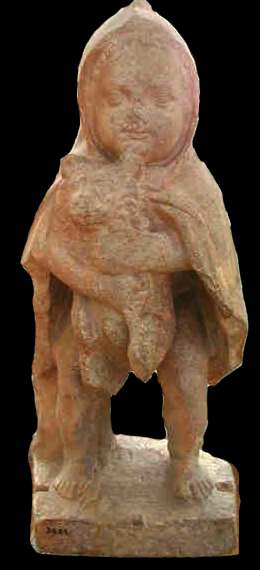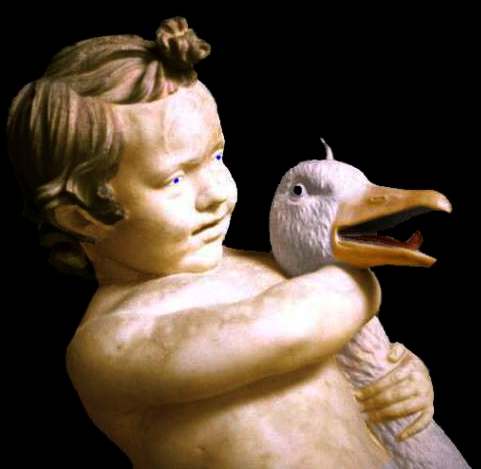Boethus
Boethus ( ancient Greek: Βόηθος ὁ Χαλκηδόνος - Boethos the Kalchedonier ), son of Athanaion, was a Greek sculptor and Toreut of Chalcedon, active in the 1st half of the 2nd century BC
Frequently this particular Boethos were almost all the works that have been associated with an antique artist Boethos attributed. This is misleading, however, as there have been between five and seven ancient artist named Boethos.
Sure of this Boethos come two works from the sanctuary of Athena Lindia in Lindos on Rhodes. Pliny mentions in his Natural History, a silver instrument from the hand of the Boethos. A statue base from Lindos, which can be dated to 184 BC, is called the Boethos, son of Athanaion, from Chalcedon as an honorary citizen and founder of the subject on the basis statue. The base of a statue of the king Antiochus IV Epiphanes, which can be dated 166-164 BC and was found in front of the Temple of Apollo at Delos, also called Boethos as an artist. A final signature ( ΒΟΗΘΟΣ ΚΑΛΧΗΔΟΝΙΟΣ ΕΠΟΙΕΙ - ΒΟËTHOS OFF ΚΑLCHEDON PREPARED (ES )) of Boethos find yourself on an Bronzeherme that from the wreck of a sunken around 100 BC Roman load sailor, the ship Fund of Mahdia, was rescued by fishermen. Was through him Alfred Merlin (1876-1965), the einschätzte him properly in age and importance, the founder of underwater archeology.
The most famous work of Boethos Pliny mentions:
The sculpture was brought together with other works of art from Nero to Rome and placed in the Domus Aurea. Later they were erected by Vespasian in the Temple of Peace. Thus the sculpture of the so-called Goose Strangler is identified, which is now down to us in the form of several Roman- early imperial marble copies; the best known copy is those in the Glyptothek in Munich.










